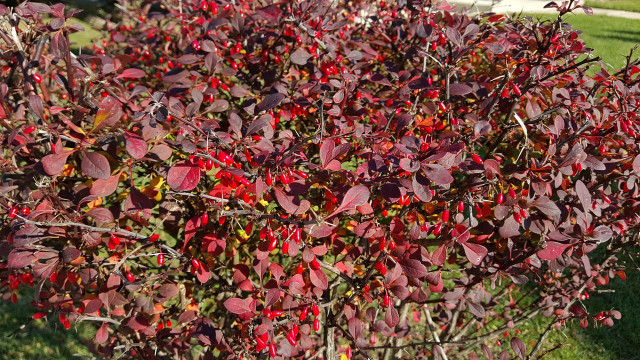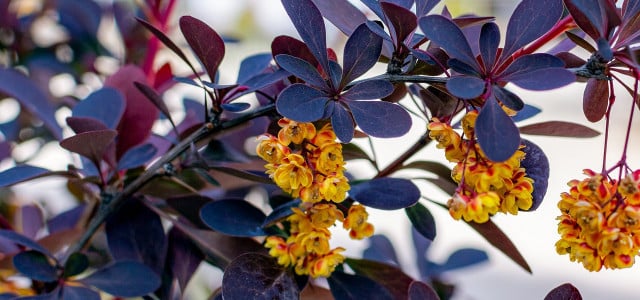Looking for an eye-catching shrub that won't get out of hand? We'll explain what makes the Concorde Barberry non-invasive and why you might want it in your garden.
The Concorde Barberry belongs to a family of shrubs called barberries. These shrubs are usually compact, rarely growing above waist height, and sport bright red autumn foliage. All barberries sport sharp spines along their branches and produce edible, though very tart, berries that can be cooked to make them more palatable. While North America does have two native species of barberries, these are rarely grown ornamentally as they require specific rocky soil. Most barberries you will encounter will be either the European Barberry or the Japanese Barberry, both of which are considered invasive. Choosing the Concorde Barberry plant instead will save you a load of time and gardening headaches.
Invasive Barberries: Why Are They a Problem?



(Foto: CC0 / Pixabay / isfara)
European and Japanese Barberries are both highly invasive, meaning that they can spread in the wild and displace native plants. Unlike native plants, invasive barberries have no diseases, pests, or natural predators in their new environment, meaning that they can grow completely unrestricted. While both plants can spread via roots, it is more common for barberries to spread via seeds, often creating dense thickets that block other plants from growing. More alarming, however, is that these thickets also harbor ticks at much higher rates than areas without Japanese Barberry.
Why Choose the Concorde Barberry?



(Foto: CC0 / Pixabay / romco)
Though native gardening for wildlife is often preferable to non-native plants, the Concorde Barberry offers a great solution to invasive shrubs. While it is a variety of Japanese Barberry, it does not produce viable seeds and thus will not reproduce and spread unchecked. Since this variety grows compact, it also will not form thickets or attract ticks like its wild counterparts. The Concorde Barberry also sports attractive deep purple foliage that becomes bright red in autumn, making it a good alternative to burning bush, which grows invasively from seeds. Concorde Barberry shrubs are petite, slow-growing, and easy to care for. Here are some growing tips:
- Concorde Barberry only grows about 18 inches in height and width, so be sure to space plants accordingly.
- Their small size makes them excellent as a border plant, short hedge, or as a ground cover plant. Check here for the 8 best plants for ground cover.
- Since Concorde Barberries have spikes, always wear gloves when handling and avoid planting in areas with foot traffic.
- Pair or alternate with bright green plants for a pop of color.
- Grow in full sun and make sure to water regularly after planting. Once settled, the Concorde Barberry won’t need additional watering, fertilizing, or trimming.
Read more:
- Peat Moss for Lawns & Gardening: Pros and Cons
- Lavender: How to Plant and Care for the Herb
- Carolina Silverbell: All You Need to Know About This Native Plant
Do you like this post?








